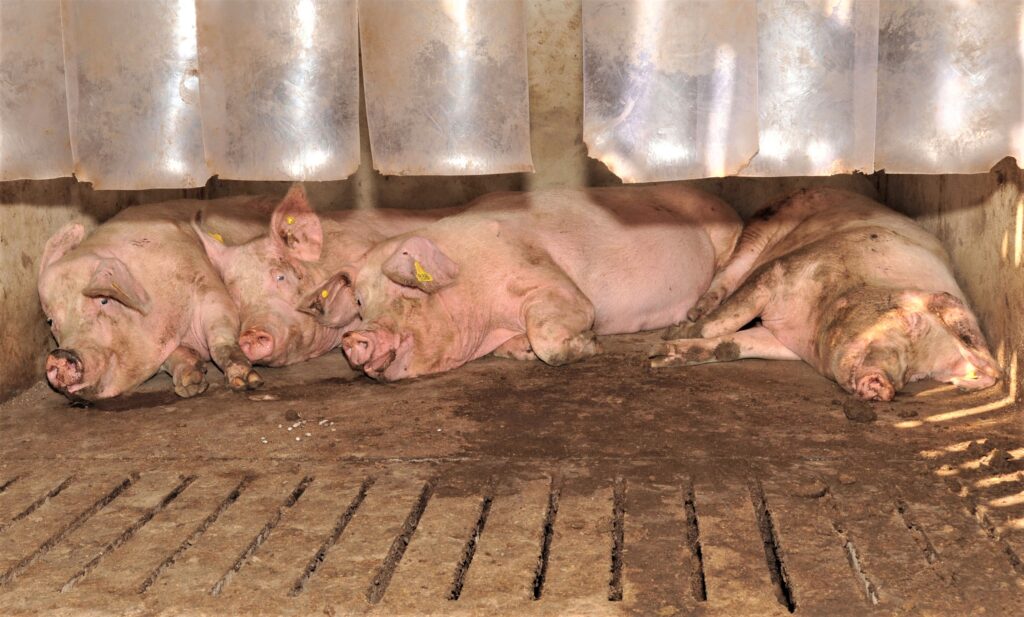Pigs that favour lying on their left side could be a sign of stomach ulcers, research conducted between the Agri-Food and Biosciences Institute (AFBI) and Queens University Belfast (QUB) has found.
The study also found that pigs with stomach ulcers were less prone to perform harmful behaviours like tail biting.
The research saw team of researchers from the AFBI and QUB identified pigs with and without stomach ulcers at slaughter, and then compared their behaviour using video recordings made in the two weeks prior to slaughter.
The clearest behavioural difference between pigs with and without ulcers was the side they chose to rest on. Pigs with stomach ulcers, even those with mild ones, lay on their right side much less than pigs without ulcers (on average 12% of the time, as compared to 25% of the time in pigs without ulcers).
This result contrasts previous Scottish research which reported that pigs with ulcers avoid lying on their left side.
Whilst unsure of the reason behind the discrepancy, AAFBI and QUB theorised that their preference for left-sided lying may be the cause – rather than the effect – of the ulcers, as these can develop within days.
Lying on the left side is thought to increase the contact between stomach fluids and the area most susceptible to ulceration, and once seven ulcers have formed, pigs may avoid lying on their left side if further contact between the ulcer and stomach fluids causes pain
The AFBI/QUB pigs were observed as ulcers were forming, whereas the Scottish pigs were observed once these had developed. To get a better idea of the ulceration at the time of the observations the team is now evaluating potential biomarkers of ulceration in pig faeces, which would allow assessment of ulceration in living pigs in future research.
The AFBI/QUB research team also observed that pigs with stomach ulcers showed less harmful social behaviour than ones without ulcers, tail biting only a third as often as pigs without ulcers, and ear biting half as often.




